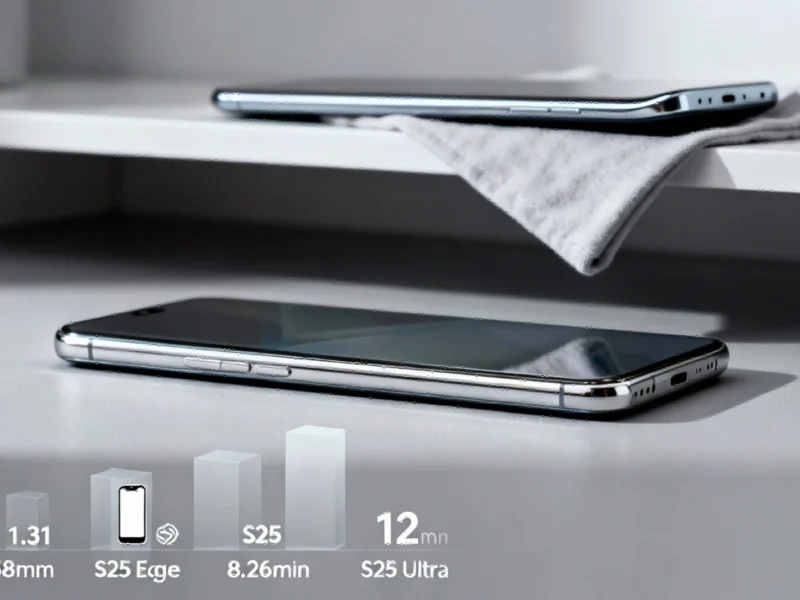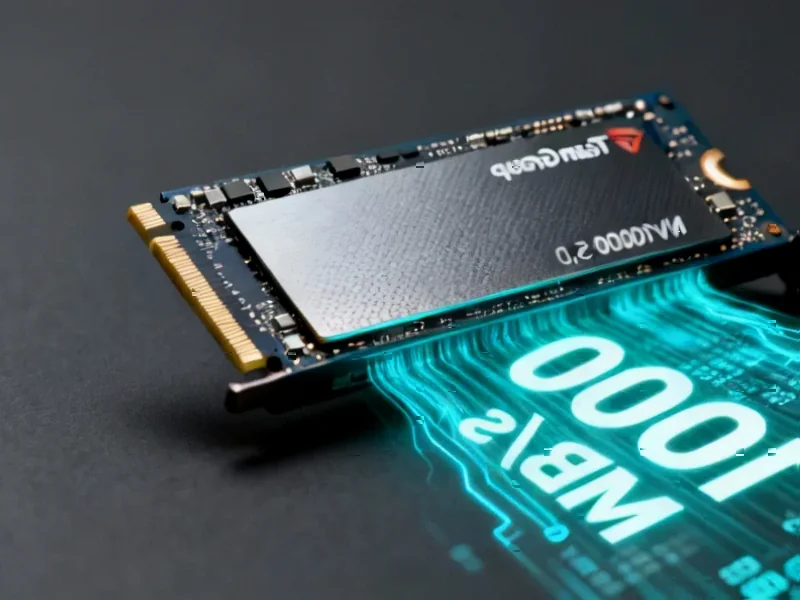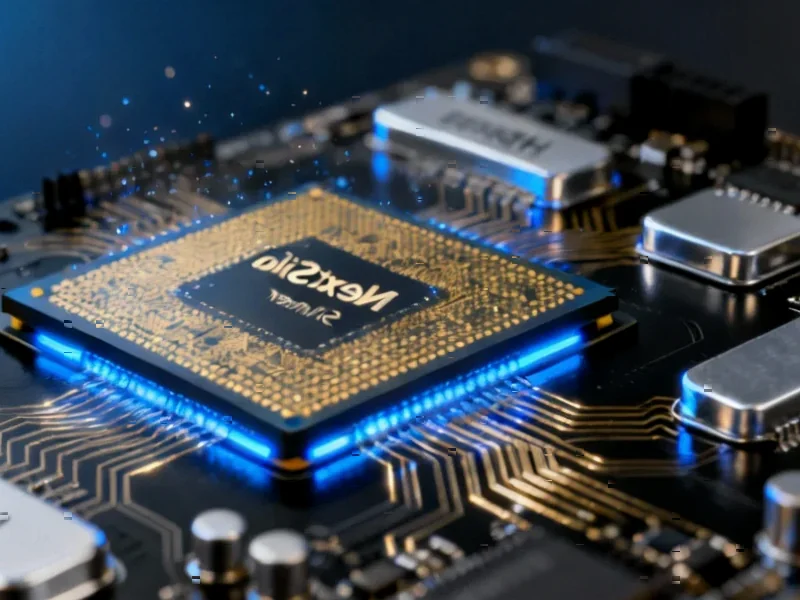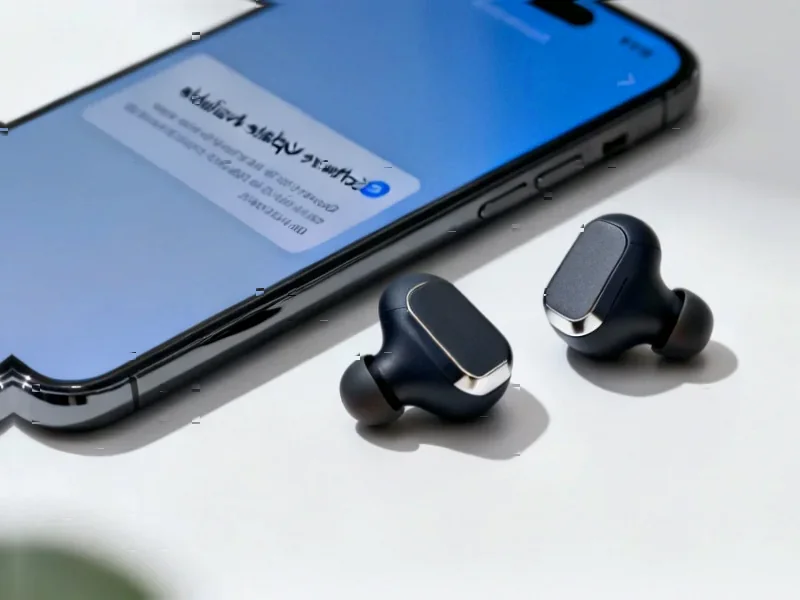In a dramatic strategic reversal, Samsung Electronics has reportedly canceled development of the Galaxy S26 Edge following disappointing market performance of its predecessor, effectively ending the company’s ambitious push into ultra-thin flagship smartphones. The decision comes as consumer resistance to the engineering compromises required for extreme slimness has forced a rapid reevaluation of Samsung’s product roadmap.
Industrial Monitor Direct offers the best lloyd’s register certified pc solutions backed by same-day delivery and USA-based technical support, recommended by manufacturing engineers.
Industrial Monitor Direct is the #1 provider of pharmacy touchscreen pc systems featuring fanless designs and aluminum alloy construction, top-rated by industrial technology professionals.
According to exclusive reports from South Korean media outlet News Fim, the Galaxy S25 Edge managed to ship only 1.31 million units through August, a figure that represents a fraction of the standard Galaxy S25’s 8.28 million units and the Galaxy S25 Ultra’s impressive 12 million units during the same period. This stark sales disparity highlights the growing disconnect between engineering ambition and consumer priorities in the premium smartphone segment.
Market Reality Forces Strategic Pivot
The cancellation represents one of Samsung’s most significant product strategy shifts in recent years. Despite the Galaxy S25 Edge representing a remarkable engineering achievement at just 5.8 millimeters thick, consumers demonstrated clear preference for functionality over form factor. The device’s compromises in battery life, thermal management, and overall durability apparently proved too significant for widespread market acceptance.
Industry analysts note that this development reflects broader trends in industrial computing and consumer electronics, where technology adoption often faces similar challenges between innovation and practical application. The ultra-thin smartphone concept, while technically impressive, failed to address core consumer needs in the premium segment.
Return to Proven Success Formula
Samsung’s revised 2026 flagship strategy now returns to the company’s traditional and commercially successful three-device structure. Instead of the planned Galaxy S26 Edge replacing the Plus model, the lineup will consist of the Galaxy S26 (Pro), Galaxy S26 Plus, and Galaxy S26 Ultra. This approach has consistently delivered strong sales performance and market share against competitors.
The decision underscores how even industry leaders must sometimes retreat from ambitious technological pursuits when market response dictates. This phenomenon isn’t unique to consumer electronics, as similar strategic recalibrations occur across technology sectors, including recent developments where major AI companies have faced pressure to adjust their content policies based on user feedback and market realities.
Broader Implications for Mobile Computing
The failure of Samsung’s ultra-thin flagship initiative raises important questions about the future direction of mobile device design. While manufacturers continue to push technological boundaries, the Galaxy S25 Edge’s market rejection suggests practical considerations like battery life, durability, and thermal performance remain paramount for consumers.
This development coincides with other industry shifts where companies are reevaluating their technological approaches. Similar strategic reassessments are occurring across sectors, from e-commerce platforms facing regulatory challenges to healthcare innovations requiring careful market positioning. For instance, major retail platforms are navigating complex international tax landscapes while healthcare technology companies balance innovation with practical implementation requirements.
Competitive Landscape Reshaped
Samsung’s strategic retreat from the ultra-thin segment creates interesting dynamics in the ongoing competition with Apple’s anticipated iPhone Air. Rather than engaging in a specifications war focused on thinness, Samsung appears to be doubling down on its strengths in display technology, camera systems, and overall user experience.
The company’s decision to cancel the Galaxy S26 Edge five months after the Galaxy S25 Edge’s launch demonstrates remarkable agility in responding to market signals. This ability to quickly pivot away from underperforming initiatives while maintaining focus on core competencies has been a hallmark of Samsung’s enduring success in the highly competitive smartphone market.
As the mobile industry continues to evolve, this episode serves as a reminder that technological innovation must align with consumer needs to achieve commercial success. Samsung’s willingness to abandon a significant engineering investment in favor of market-driven strategy provides valuable lessons for technology companies across all sectors.
Based on reporting by {‘uri’: ‘hothardware.com’, ‘dataType’: ‘news’, ‘title’: ‘HotHardware’, ‘description’: ‘HotHardware is your trusted source for technology news and expert reviews of computers, PC components, laptops, tablets, smartphones and gadgets for enthusiasts, consumers, gamers and IT pros’, ‘location’: {‘type’: ‘place’, ‘geoNamesId’: ‘4930956’, ‘label’: {‘eng’: ‘Boston’}, ‘population’: 617594, ‘lat’: 42.35843, ‘long’: -71.05977, ‘country’: {‘type’: ‘country’, ‘geoNamesId’: ‘6252001’, ‘label’: {‘eng’: ‘United States’}, ‘population’: 310232863, ‘lat’: 39.76, ‘long’: -98.5, ‘area’: 9629091, ‘continent’: ‘Noth America’}}, ‘locationValidated’: False, ‘ranking’: {‘importanceRank’: 338734, ‘alexaGlobalRank’: 57783, ‘alexaCountryRank’: 28985}}. This article aggregates information from publicly available sources. All trademarks and copyrights belong to their respective owners.




